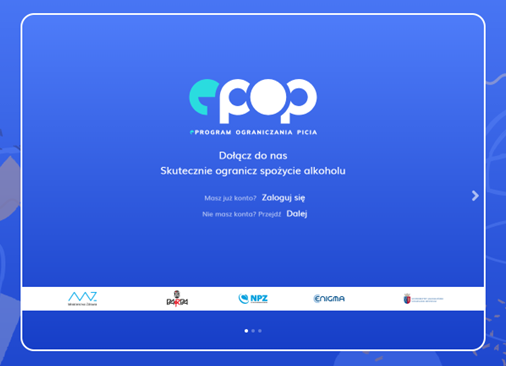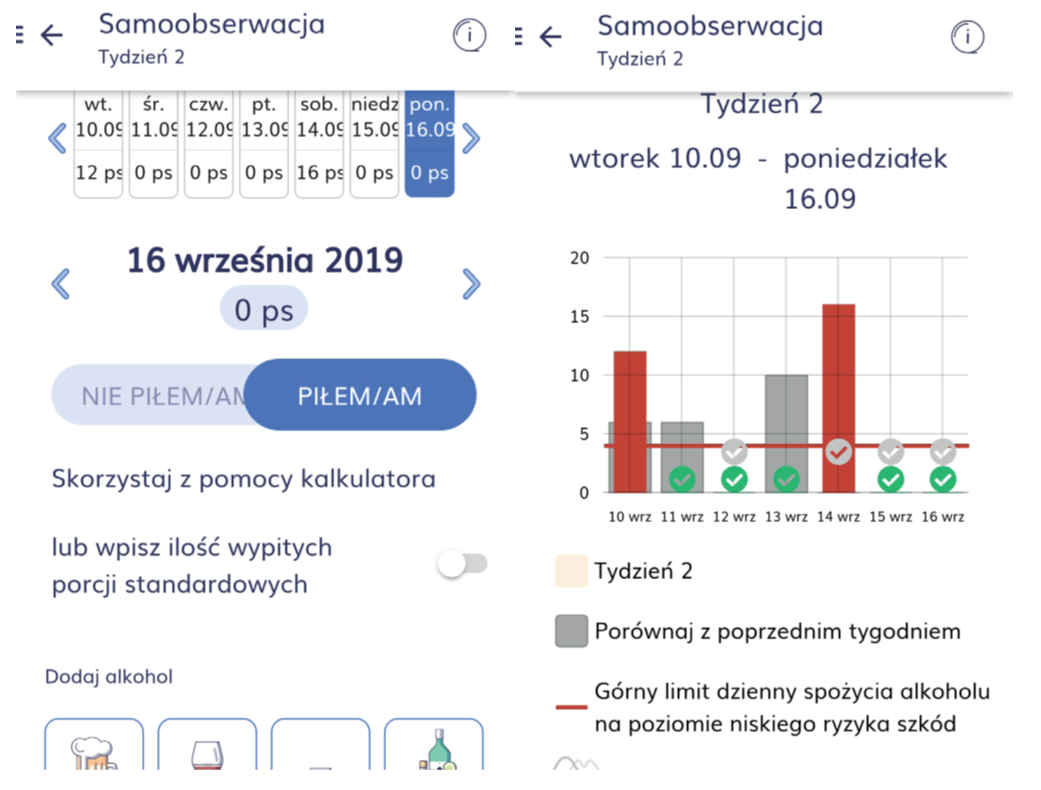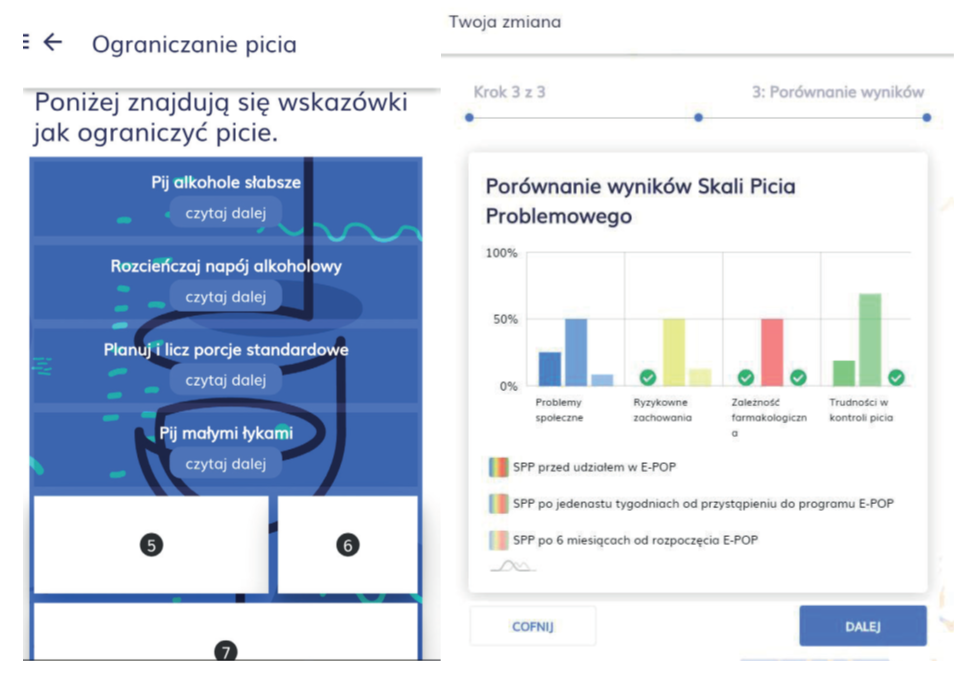
Find out more

Read the article

Find out more

Read the article

Find out more
Alcohol-related disorders vary in severity and reveal themselves in different areas of life. Even a single drink affects the body, sometimes severely disrupting its functions. Regular consumption may eventually lead to addiction. However, an alcohol abuser is not always an addict and can modify his or her alcohol-related behaviour by reducing alcohol consumption. For persons with an alcohol addiction the optimal goal of behaviour modification is abstinence and possibly treatment in a specialised facility.

People who drink alcohol in a risky or harmful way may reduce drinking on their own and alter their drinking pattern to decrease health risks. In order to identify their alcohol problem or seek guidance to achieve improvement, people often search for information online. A tool, which includes an e-therapy platform and a mobile application, has been created to address such needs. Commissioned by the Ministry of Health, E-POP (e-programme of drinking reduction) was developed at the Department of Medical Psychology of the Chair of Psychiatry of the Jagiellonian University Medical College on the initiative of the State Agency for the Prevention of Alcohol-Related Problems (PARPA)1 as part of the 2016-2020 National Health Programme competition. Currently, the data on the website and in the application are processed by the Jagiellonian University Medical College at the request of the National Centre for Addiction Prevention in connection with the implementation of the project ‘Development, coordination and promotion of an e-therapy platform and mobile application to support alcohol drinking reduction’ in 2022-2025. This task is co-financed by the Gambling Problem Solving Fund available to the Ministry of Health as part of the competition organised by the National Centre for Addiction Prevention.
The standards for the treatment of alcohol use disorders developed by, among others, the National Institute on Alcohol Abuse and Alcoholism NIAAA (USA) and the National Institute for Health and Clinical Excellence NICE (UK), including the PARPA guidelines for drinking reduction programmes provided the theoretical foundations for the e-programme. The application is free of charge and anonymous (Fig.1).
The main objective of E-POP is to increase the user’s ability to reduce alcohol consumption. There are four stages of the programme:
At the stage of information and diagnosis, users obtain basic information about E-POP and alcohol abuse. Then they are asked to complete diagnostic questionnaires on the severity of their drinking problems. The app generates feedback on the basis of the information provided. After self-diagnosis, users need to register in order to participate in further stages of the programme.
The 11-week programme of change is a therapeutic stage. Each week, users work independently on a different element of behaviour which is crucial for the reduction of alcohol consumption. Successive weeks have been named in a user-friendly way to make them easy to remember and associate with the theme of the week.

The themes are as follows:
Week 1 – A good start
Week 2 – I want and I don’t want
Week 3 – Inhibition
Week 4 – Ways to reduce drinking
Week 5 – A contract of change
Week 6 – Dangers and targets
Week 7 – Alcohol and emotions
Week 8 – High risk situations
Week 9 – Coping with lapses
Week 10 – Healthy alternatives
Week 11 – Change analysis and debriefing
Each week, users engage in interactive exercises motivating them to alter their drinking behaviour and introduce the best elements of behaviour for the targets set. Users complete self-observation forms by marking the amount of alcohol consumed, which is automatically converted into the number of standard portions (Fig. 2). This allows them to see daily and weekly summaries and comparisons with previous weeks in the context of low-risk drinking and self-imposed goals.
Among others, exercises focus on analysing and gaining a deeper insight into the motives for alcohol consumption and the resulting disadvantages as well as the motives that foster positive change; learning useful skills for the analysis and making the desired improvements; seeking alternative behaviour to replace drinking and devising a drinking reduction plan with further monitoring (Fig. 4). Users also have access to very practical features, such as education or results in a pdf format.
At the end of the 'Time for a Change' stage, users are asked to evaluate the application and the goals achieved. Six months after logging in, users are reminded of the opportunity to self-diagnose their drinking styles again. By completing one of the initial questionnaires once again after the 11-week programme of change, users may verify the changes achieved in their drinking behaviour by comparing the results (Fig. 5).

Evaluation studies of the E-POP programme to date indicate a high level of interest in the application. Participants who completed the entire treatment programme assessed the usefulness of the application for drinking reduction according to several dimensions. The results of the app evaluation in the entire group indicate that the highest ratings were obtained in terms of increasing knowledge and skills in drinking reduction (4.3/5) as well as the willingness to recommend E-POP to others (4.27/5). Other dimensions were rated at the level of about 4/5.
The app usability was analysed using the Self-Help Model Scale (SHMS). E-POP fulfils all the usability criteria for drinking reduction as it involves informational and motivational aspects, the identification of high-risk situations and ways to manage them, as well as strategies to prevent a relapse into a previous drinking style. The factors included in the SHMS scale are addressed, to a different extent, in various functionalities of E-POP.
E-POP is available in the following formats:
1As of 1 January 2022 PARPA (State Agency for the Prevention of Alcohol-Related Problems) and KBPN (National Bureau for Drug Prevention) were transformed into the National Centre for Addiction Prevention.
Professor Barbara Bętkowska-Korpała – Head of the Department of Medical Psychology at the Jagiellonian University Chair of Psychiatry and Head of the Clinical Psychology Department of the University Hospital in Krakow.
I like
people liked this article